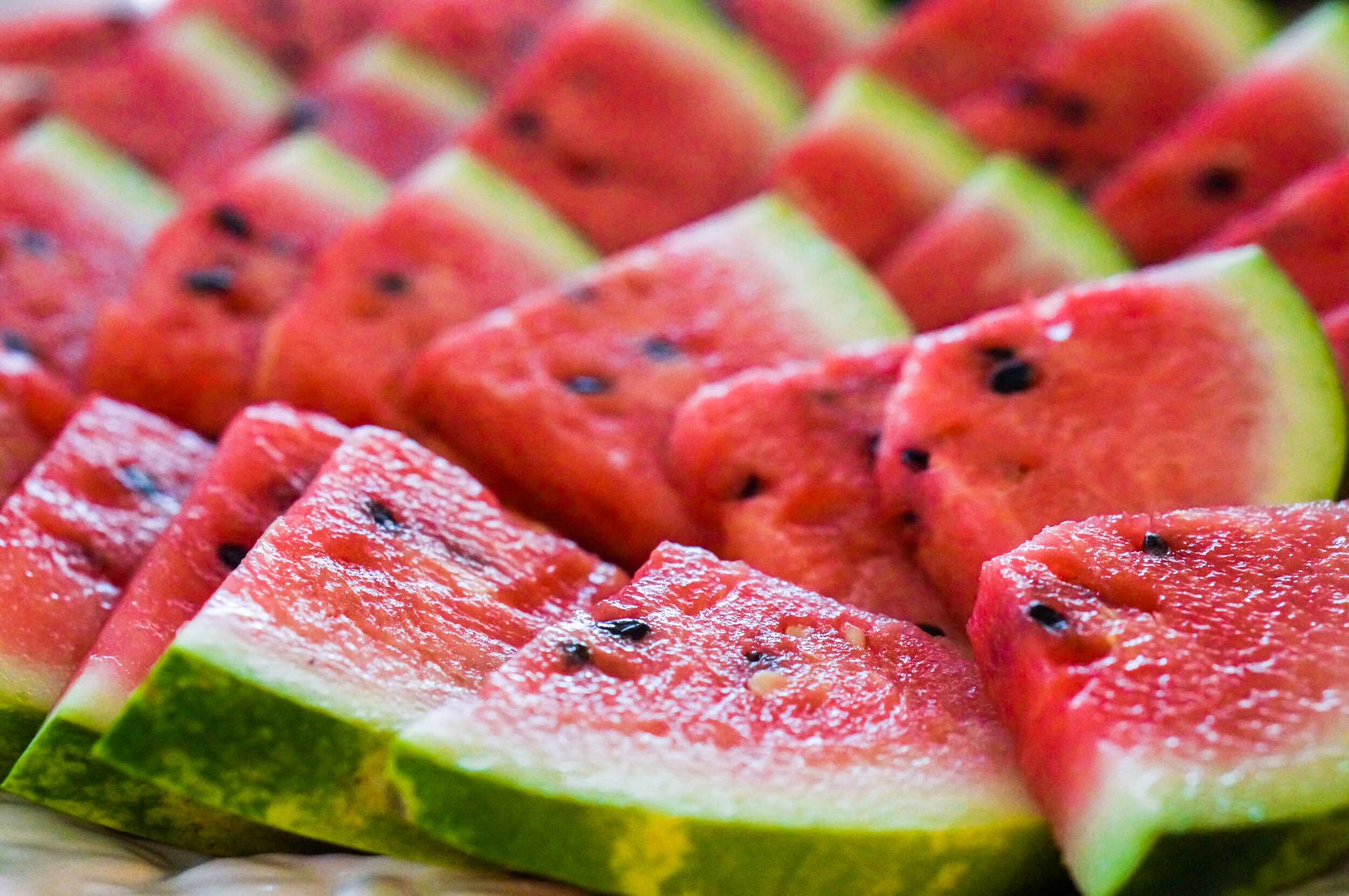Mindful Eating & African Diaspora Fruits
Engage Your Senses
A key part of mindful eating is engaging our senses. We invite you to explore the visual appearance, smell, taste, texture, and sound of your food. One of the easiest ways to practice mindful eating is with fruits, which are beautiful, flavorful, and healthy. Below are fruits that are enjoyed throughout the African diaspora.
Fresh Berries
Tropical Fruits
Sliced Watermelon
Mixed Salad
What is Mindfulness?
Mindfulness is an ancient practice that involves the habit of developing curiosity or intentional awareness about the present moment in ways that can improve our health. Since history shapes the present moment, mindfulness includes a recognition or acknowledgment of the past. In addition, mindfulness encourages an awareness that individuals and groups are social agents. In other words, we can play an important role in shaping the current realities in our lives and in society.
At Food at the Center, we see ourselves as social agents who work to maintain, restore, and contribute to the culinary legacy of the African diaspora, particularly the aspects that support our health. Today we invite you to use mindfulness to celebrate an aspect of the foods and culinary legacy of the African diaspora.
What is the African Diaspora?
The term “African diaspora” has traditionally been used to describe the groups of people who were forced to migrate from West and Central Africa to the Americas during the transatlantic slave trade. Beginning in the 1500s, millions of Africans were brought to the United States. West and Central Africans were also brought to South America and Caribbean countries such as Jamaica, where my mom and I were born.
Others have used the term “African diaspora” to refer to people who have more recently migrated from Sub Sharan Africa to other parts of the world. The African diaspora also includes the descendants of these recent migrants.
African Heritage Diet and Plate
African Heritage Diet is a term used by organizations such as Oldays which promotes an African diaspora version of the Mediterranean diet. This diet mirrors the cuisines prepared by my mother as she took steps to reverse her prediabetes. According to the Centers for Disease Control and Prevention, diabetes is among the top leading cause of death for Black or African American women in the United States.
At Food at the Center, we have used an introductory version of the African Heritage Diet to teach about African Culinary Heritage. Among the lessons taught are the social aspects of food such as eating meals together with family and friends and the types of nutrient-dense foods traditionally eaten like leafy greens and vegetables, whole grains, protein, and fruit. More recently we have combined mindful eating practices with African Culinary Heritage.
Fruits and African Culinary Heritage
A key aspect of mindful eating is being aware of the foods that you eat and how they make you feel. As a child growing up in Jamaica, one of my favorite past time was eating colorful, sweet, and juicy fruits such as mango, banana, papaya, pineapple, and watermelon. I would lose myself in the sensory delight of the flavor, texture, and beauty of these fruits. Little did I know then that these tropical fruits were rich in vitamins and minerals which were good for my health.
While in college I had the opportunity to study abroad at the University of Ghana, Lagon, and travel to Nigeria and the Ivory Coast. I was delighted to find some of my favorite fruits like mango and pineapple in these West African countries. These tropical fruits were plentiful and typically sold by women on the streets. More recently, I learned that watermelon has its origins in African and is a cousin to egusi, a fruit that looks like a watermelon and is harvested for its seeds.
When I moved to the United States from Jamaica, my mother and African American friends introduced me to many other fruits. Among the fruit introduced were strawberries, blueberries, blackberries, and raspberries. Blueberries are sometimes regarded as superfoods because they have minerals and vitamins that have been found to fight cancer and reduce the risk of diabetes. In addition, papaya has been found to have possible effects in reducing the risk of diabetes and obesity. The American Diabetes Association recommends that you eat 1/2 cup fresh fruit daily.
Try Mindful Eating with Fruits
Below is a free downloadable guide to practice mindful eating with fruits from the African diaspora. You can also use the guide to practice mindful eating with any food of your choice.





